

Living in a major city comes with many perks. Urban areas team with entertainment, cultural venus, food, and job opportunities. Yet if you make a large U.S. city your home, you will likely pay a high price in rent.
Rents in large metros generally do not come cheap, and prices have risen. In its March report, Rent.com reports the average rent for a one-bedroom apartment in the U.S. was $1,685, a 24.4% year-over-year hike. Two-bedroom apartments rent for $1,997, 21.8% higher than a year ago. Or, you could move to the cheapest cities where everyone wants to live right now.
Although you can find cheaper digs – say, for $1,500 – you will likely be cramped into a very small apartment in most cities. To identify how much an apartment $1,500 can get you in America’s largest cities, 24/7 Wall St. used square footage estimates based on real estate prices from RentCafe.com. Average apartment rent and sizes also come from RentCafe, while population figures came from the American Community Survey 5-Year Estimates. Cities are ordered by population size.
For $1,500, the smallest apartment is in – where else? – New York City. There, you will fork over $1,500 every month for a paltry 262 square feet, which is about the average size of a master bedroom in a home of 2,000 to 3,000 square feet, according to Homedit.com. Basically, 262 square feet is a tiny studio with a small kitchen and bathroom. Or you could move in with Mom and Dad. These are the states where most adults live with their parents.
On the other hand, $1,500 gets you a spacious 1,447 square feet in Tulsa, Oklahoma. Compare that to the average size of a U.S. home as of 2019 of 2,300 square feet, based on Rocket Mortgage estimates, and you are living quite large.
Click here to see how much living space $1,500 gets you in America’s largest cities

1. Los Angeles, California
> Total population (2016-2020 5-year estimate): 3,973,278
> Apartment space for $1,500: 454 square feet – 7th fewest on list
> Apartment rent: $2,613 – 9th highest on list
> Average apartment size: 791 square feet – 12th fewest on list
[in-text-ad]
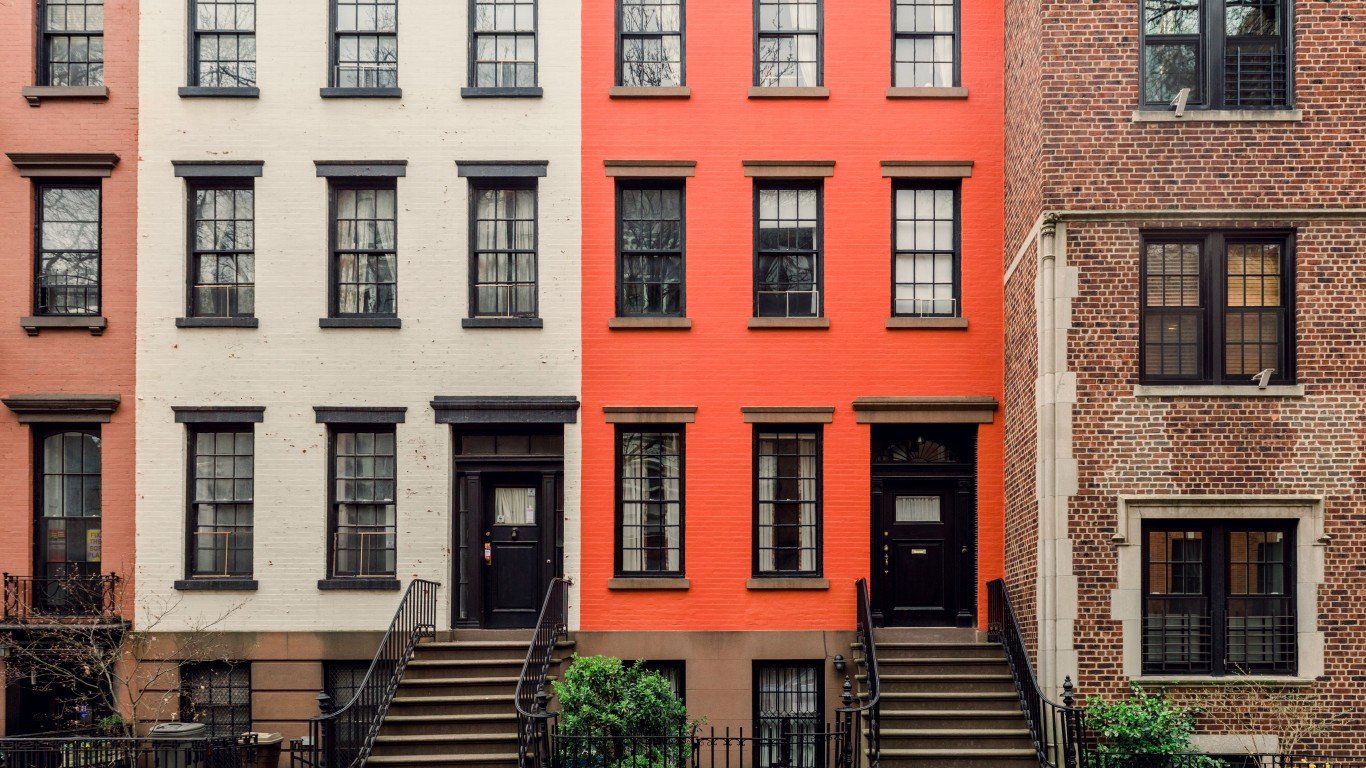
2. Brooklyn, New York
> Total population (2016-2020 5-year estimate): 2,736,074
> Apartment space for $1,500: 357 square feet – 4th fewest on list
> Apartment rent: $3,061 – 4th highest on list
> Average apartment size: 728 square feet – 3rd fewest on list

3. Chicago, Illinois
> Total population (2016-2020 5-year estimate): 2,699,347
> Apartment space for $1,500: 540 square feet – 13th fewest on list
> Apartment rent: $2,080 – 13th highest on list
> Average apartment size: 749 square feet – 7th fewest on list
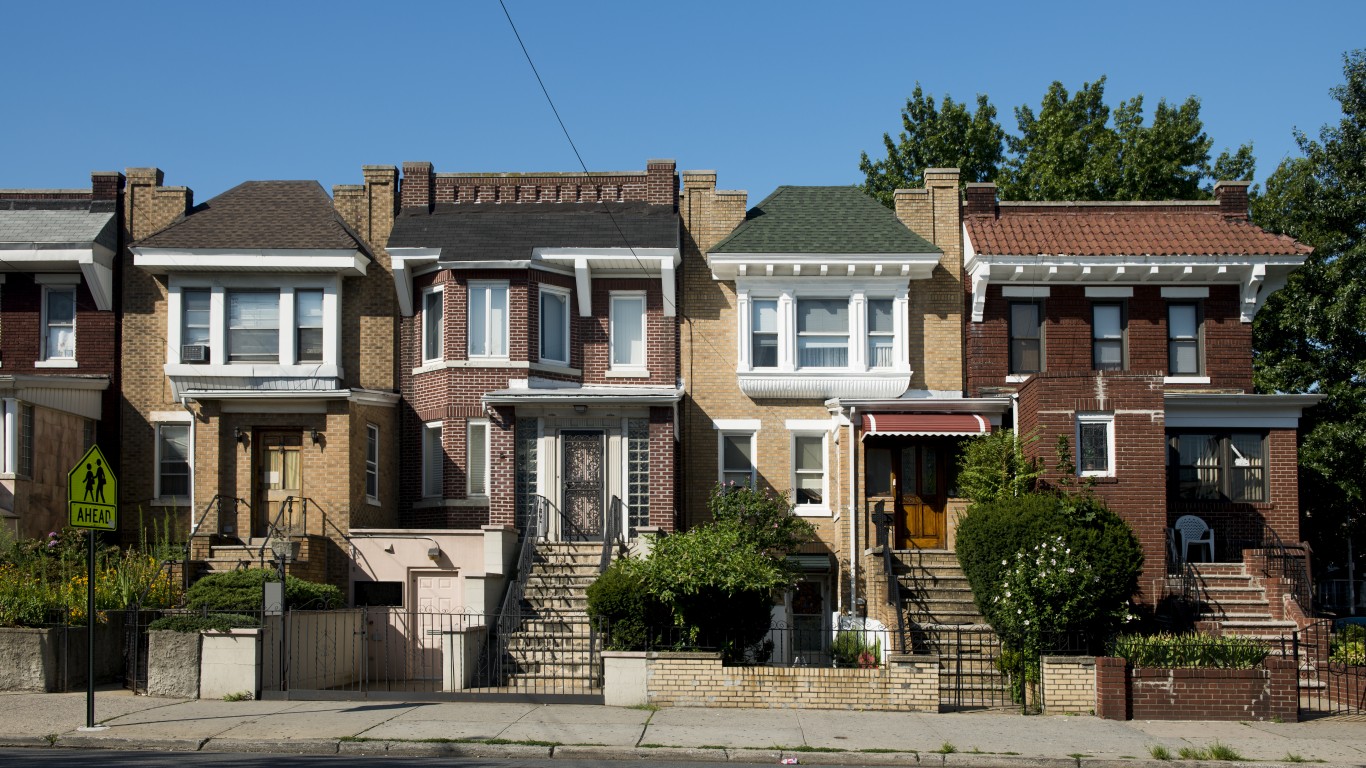
4. Queens, New York
> Total population (2016-2020 5-year estimate): 2,405,464
> Apartment space for $1,500: 399 square feet – 5th fewest on list
> Apartment rent: $2,732 – 7th highest on list
> Average apartment size: 726 square feet – 2nd fewest on list
[in-text-ad-2]

5. Houston, Texas
> Total population (2016-2020 5-year estimate): 2,313,238
> Apartment space for $1,500: 1,059 square feet – 12th greatest on list
> Apartment rent: $1,247 – 15th lowest on list
> Average apartment size: 880 square feet – 15th greatest on list

6. Manhattan, New York
> Total population (2016-2020 5-year estimate): 1,694,251
> Apartment space for $1,500: 262 square feet – the fewest on list
> Apartment rent: $4,269 – the highest on list
> Average apartment size: 745 square feet – 5th fewest on list
[in-text-ad]

7. Phoenix, Arizona
> Total population (2016-2020 5-year estimate): 1,658,422
> Apartment space for $1,500: 804 square feet – 22nd fewest on list
> Apartment rent: $1,494 – 25th lowest on list
> Average apartment size: 801 square feet – 15th fewest on list

8. Philadelphia, Pennsylvania
> Total population (2016-2020 5-year estimate): 1,581,531
> Apartment space for $1,500: 679 square feet – 15th fewest on list
> Apartment rent: $1,760 – 18th highest on list
> Average apartment size: 797 square feet – 14th fewest on list

9. San Antonio, Texas
> Total population (2016-2020 5-year estimate): 1,529,133
> Apartment space for $1,500: 1,061 square feet – 10th greatest on list
> Apartment rent: $1,210 – 13th lowest on list
> Average apartment size: 856 square feet – 21st greatest on list
[in-text-ad-2]

10. San Diego, California
> Total population (2016-2020 5-year estimate): 1,414,545
> Apartment space for $1,500: 493 square feet – 11th fewest on list
> Apartment rent: $2,662 – 8th highest on list
> Average apartment size: 875 square feet – 18th greatest on list
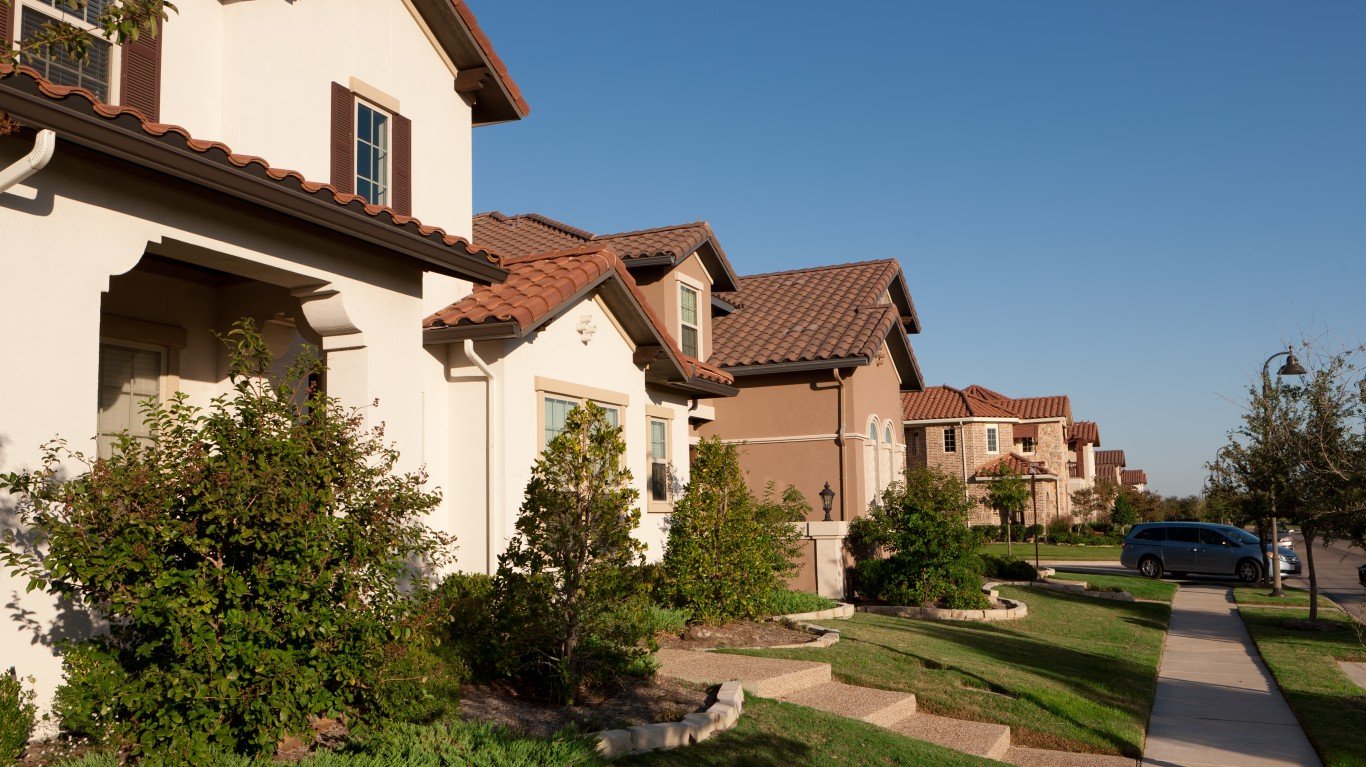
11. Dallas, Texas
> Total population (2016-2020 5-year estimate): 1,338,846
> Apartment space for $1,500: 881 square feet – 24th greatest on list
> Apartment rent: $1,440 – 21st lowest on list
> Average apartment size: 846 square feet – 25th greatest on list
[in-text-ad]
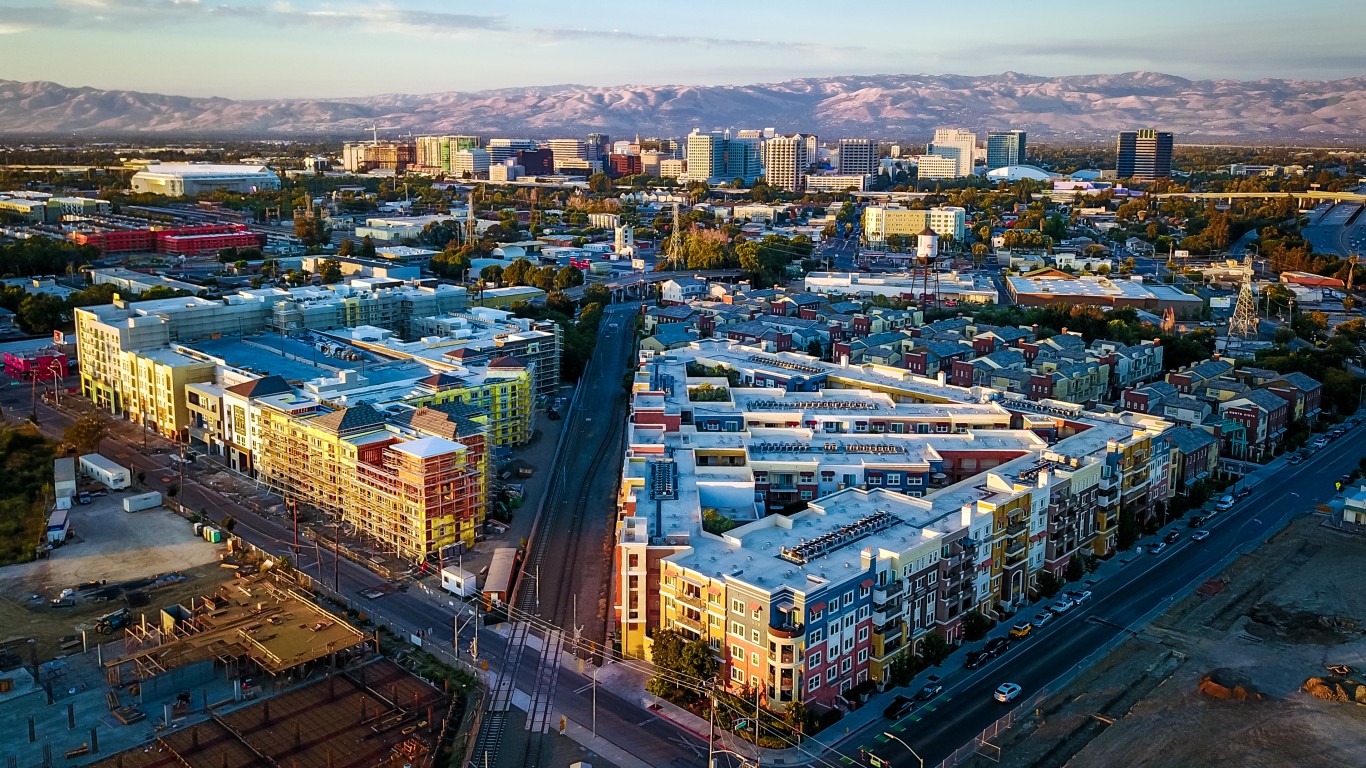
12. San Jose, California
> Total population (2016-2020 5-year estimate): 1,029,409
> Apartment space for $1,500: 483 square feet – 9th fewest on list
> Apartment rent: $2,748 – 6th highest on list
> Average apartment size: 885 square feet – 14th greatest on list

13. Austin, Texas
> Total population (2016-2020 5-year estimate): 965,872
> Apartment space for $1,500: 753 square feet – 20th fewest on list
> Apartment rent: $1,722 – 19th highest on list
> Average apartment size: 864 square feet – 20th greatest on list

14. Jacksonville, Florida
> Total population (2016-2020 5-year estimate): 902,488
> Apartment space for $1,500: 1,006 square feet – 15th greatest on list
> Apartment rent: $1,437 – 20th lowest on list
> Average apartment size: 964 square feet – 3rd greatest on list
[in-text-ad-2]

15. Fort Worth, Texas
> Total population (2016-2020 5-year estimate): 892,221
> Apartment space for $1,500: 988 square feet – 17th greatest on list
> Apartment rent: $1,324 – 17th lowest on list
> Average apartment size: 872 square feet – 19th greatest on list

16. Columbus, Ohio
> Total population (2016-2020 5-year estimate): 889,079
> Apartment space for $1,500: 1,230 square feet – 8th greatest on list
> Apartment rent: $1,073 – 7th lowest on list
> Average apartment size: 880 square feet – 15th greatest on list
[in-text-ad]

17. San Francisco, California
> Total population (2016-2020 5-year estimate): 874,784
> Apartment space for $1,500: 345 square feet – 3rd fewest on list
> Apartment rent: $3,242 – 3rd highest on list
> Average apartment size: 746 square feet – 6th fewest on list
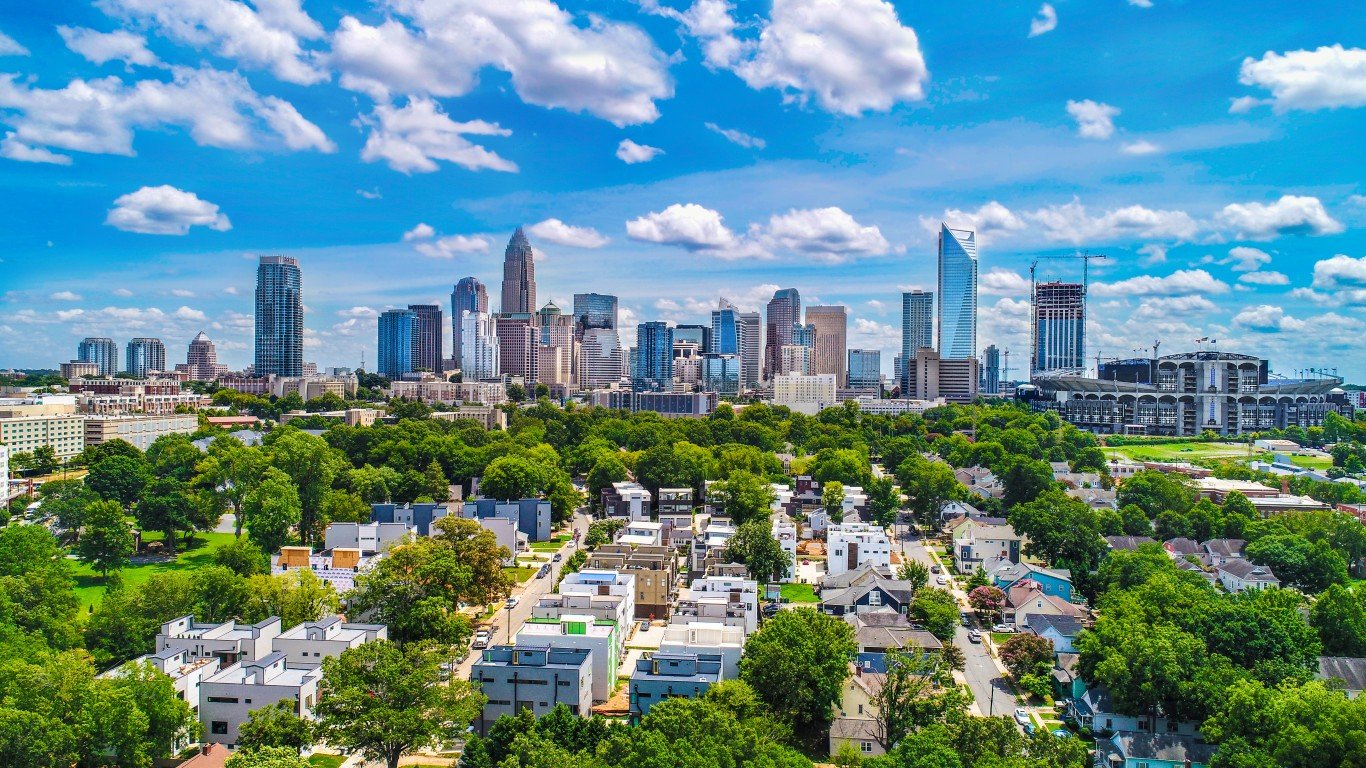
18. Charlotte, North Carolina
> Total population (2016-2020 5-year estimate): 873,570
> Apartment space for $1,500: 915 square feet – 23rd greatest on list
> Apartment rent: $1,543 – 23rd highest on list
> Average apartment size: 941 square feet – 5th greatest on list

19. Indianapolis, Indiana
> Total population (2016-2020 5-year estimate): 869,387
> Apartment space for $1,500: 1,273 square feet – 7th greatest on list
> Apartment rent: $1,036 – 6th lowest on list
> Average apartment size: 879 square feet – 17th greatest on list
[in-text-ad-2]

20. Seattle, Washington
> Total population (2016-2020 5-year estimate): 741,251
> Apartment space for $1,500: 475 square feet – 8th fewest on list
> Apartment rent: $2,181 – 12th highest on list
> Average apartment size: 691 square feet – the fewest on list
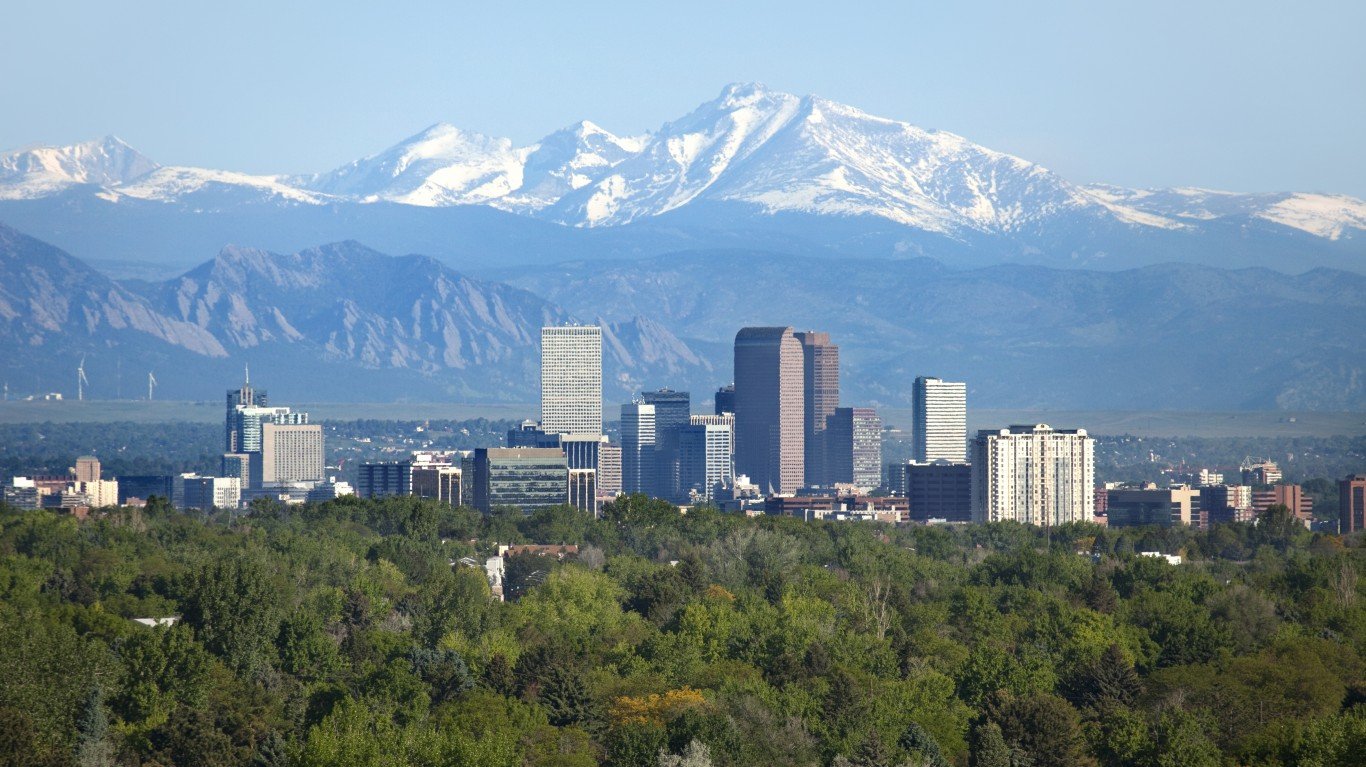
21. Denver, Colorado
> Total population (2016-2020 5-year estimate): 715,878
> Apartment space for $1,500: 681 square feet – 16th fewest on list
> Apartment rent: $1,860 – 15th highest on list
> Average apartment size: 845 square feet – 25th fewest on list
[in-text-ad]

22. Washington, District of Columbia
> Total population (2016-2020 5-year estimate): 701,974
> Apartment space for $1,500: 500 square feet – 12th fewest on list
> Apartment rent: $2,234 – 11th highest on list
> Average apartment size: 745 square feet – 5th fewest on list

23. Boston, Massachusetts
> Total population (2016-2020 5-year estimate): 689,326
> Apartment space for $1,500: 340 square feet – 2nd fewest on list
> Apartment rent: $3,589 – 2nd highest on list
> Average apartment size: 813 square feet – 19th fewest on list

24. El Paso, Texas
> Total population (2016-2020 5-year estimate): 679,879
> Apartment space for $1,500: 1,305 square feet – 5th greatest on list
> Apartment rent: $933 – 3rd lowest on list
> Average apartment size: 812 square feet – 18th fewest on list
[in-text-ad-2]

25. Detroit, Michigan
> Total population (2016-2020 5-year estimate): 672,351
> Apartment space for $1,500: 1,028 square feet – 13th greatest on list
> Apartment rent: $1,156 – 12th lowest on list
> Average apartment size: 792 square feet – 13th fewest on list

26. Nashville, Tennessee
> Total population (2016-2020 5-year estimate): 667,070
> Apartment space for $1,500: 799 square feet – 21st fewest on list
> Apartment rent: $1,667 – 20th highest on list
> Average apartment size: 888 square feet – 11th greatest on list
[in-text-ad]

27. Memphis, Tennessee
> Total population (2016-2020 5-year estimate): 650,910
> Apartment space for $1,500: 1,375 square feet – 3rd greatest on list
> Apartment rent: $992 – 4th lowest on list
> Average apartment size: 909 square feet – 8th greatest on list
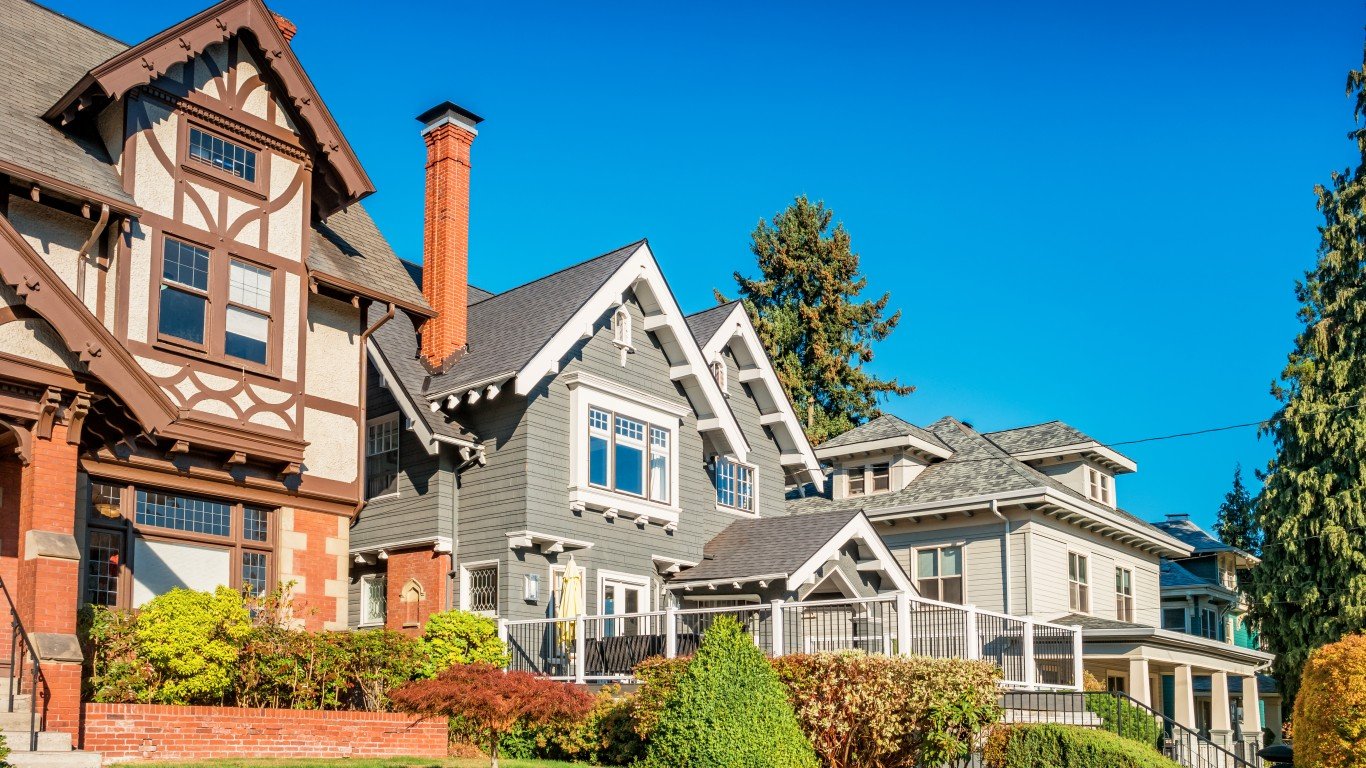
28. Portland, Oregon
> Total population (2016-2020 5-year estimate): 650,380
> Apartment space for $1,500: 684 square feet – 17th fewest on list
> Apartment rent: $1,661 – 21st highest on list
> Average apartment size: 757 square feet – 8th fewest on list

29. Oklahoma City, Oklahoma
> Total population (2016-2020 5-year estimate): 649,821
> Apartment space for $1,500: 1,431 square feet – 2nd greatest on list
> Apartment rent: $891 – 2nd lowest on list
> Average apartment size: 850 square feet – 23rd greatest on list
[in-text-ad-2]

30. Las Vegas, Nevada
> Total population (2016-2020 5-year estimate): 644,594
> Apartment space for $1,500: 934 square feet – 22nd greatest on list
> Apartment rent: $1,427 – 19th lowest on list
> Average apartment size: 889 square feet – 10th greatest on list

31. Louisville, Kentucky
> Total population (2016-2020 5-year estimate): 618,733
> Apartment space for $1,500: 1,285 square feet – 6th greatest on list
> Apartment rent: $1,090 – 8th lowest on list
> Average apartment size: 934 square feet – 6th greatest on list
[in-text-ad]

32. Baltimore, Maryland
> Total population (2016-2020 5-year estimate): 602,274
> Apartment space for $1,500: 822 square feet – 24th fewest on list
> Apartment rent: $1,503 – 25th highest on list
> Average apartment size: 824 square feet – 23rd fewest on list

33. Milwaukee, Wisconsin
> Total population (2016-2020 5-year estimate): 592,649
> Apartment space for $1,500: 988 square feet – 17th greatest on list
> Apartment rent: $1,292 – 16th lowest on list
> Average apartment size: 851 square feet – 22nd greatest on list

34. Albuquerque, New Mexico
> Total population (2016-2020 5-year estimate): 560,447
> Apartment space for $1,500: 1,060 square feet – 11th greatest on list
> Apartment rent: $1,146 – 11th lowest on list
> Average apartment size: 810 square feet – 16th fewest on list
[in-text-ad-2]
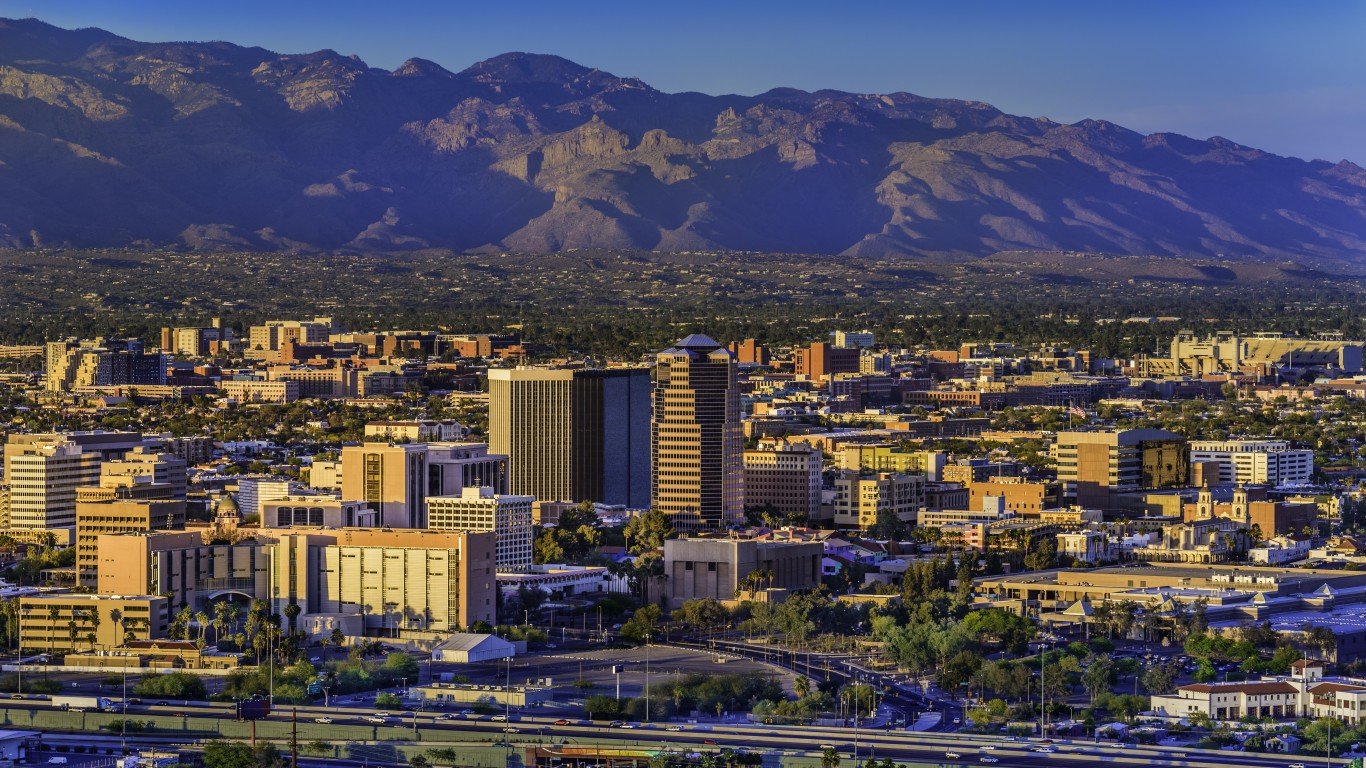
35. Tucson, Arizona
> Total population (2016-2020 5-year estimate): 545,340
> Apartment space for $1,500: 993 square feet – 16th greatest on list
> Apartment rent: $1,146 – 11th lowest on list
> Average apartment size: 759 square feet – 9th fewest on list

36. Fresno, California
> Total population (2016-2020 5-year estimate): 526,147
> Apartment space for $1,500: 947 square feet – 20th greatest on list
> Apartment rent: $1,417 – 18th lowest on list
> Average apartment size: 895 square feet – 9th greatest on list
[in-text-ad]

37. Mesa, Arizona
> Total population (2016-2020 5-year estimate): 508,918
> Apartment space for $1,500: 828 square feet – 25th fewest on list
> Apartment rent: $1,487 – 23rd lowest on list
> Average apartment size: 821 square feet – 20th fewest on list

38. Sacramento, California
> Total population (2016-2020 5-year estimate): 503,482
> Apartment space for $1,500: 698 square feet – 18th fewest on list
> Apartment rent: $1,779 – 16th highest on list
> Average apartment size: 828 square feet – 24th fewest on list

39. Atlanta, Georgia
> Total population (2016-2020 5-year estimate): 497,642
> Apartment space for $1,500: 821 square feet – 23rd fewest on list
> Apartment rent: $1,777 – 17th highest on list
> Average apartment size: 973 square feet – the greatest on list
[in-text-ad-2]

40. Kansas City, Missouri
> Total population (2016-2020 5-year estimate): 491,158
> Apartment space for $1,500: 1,172 square feet – 9th greatest on list
> Apartment rent: $1,134 – 9th lowest on list
> Average apartment size: 886 square feet – 13th greatest on list

41. Omaha, Nebraska
> Total population (2016-2020 5-year estimate): 479,529
> Apartment space for $1,500: 1,334 square feet – 4th greatest on list
> Apartment rent: $1,031 – 5th lowest on list
> Average apartment size: 917 square feet – 7th greatest on list
[in-text-ad]
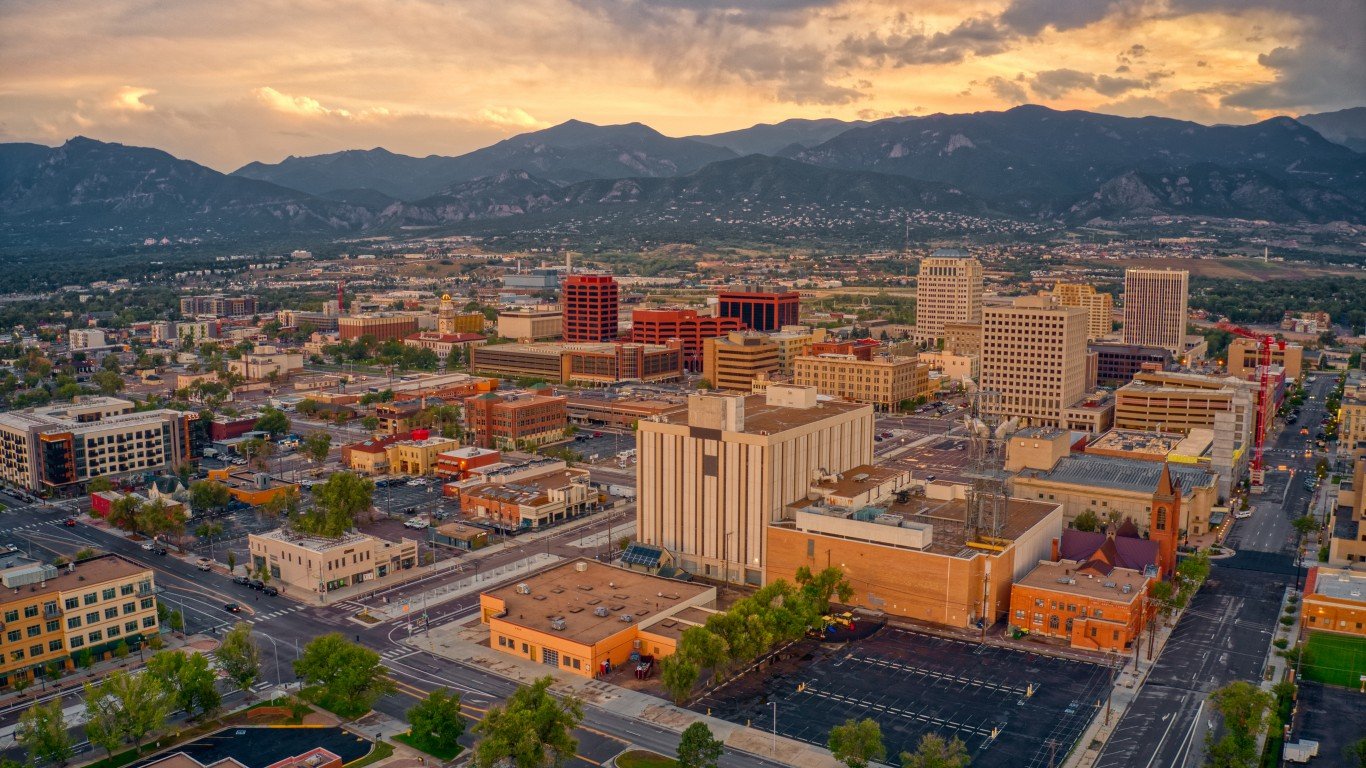
42. Colorado Springs, Colorado
> Total population (2016-2020 5-year estimate): 471,686
> Apartment space for $1,500: 873 square feet – 25th greatest on list
> Apartment rent: $1,461 – 22nd lowest on list
> Average apartment size: 850 square feet – 23rd greatest on list

43. Raleigh, North Carolina
> Total population (2016-2020 5-year estimate): 469,698
> Apartment space for $1,500: 943 square feet – 21st greatest on list
> Apartment rent: $1,524 – 24th highest on list
> Average apartment size: 958 square feet – 4th greatest on list

44. Long Beach, California
> Total population (2016-2020 5-year estimate): 462,081
> Apartment space for $1,500: 486 square feet – 10th fewest on list
> Apartment rent: $2,502 – 10th highest on list
> Average apartment size: 811 square feet – 17th fewest on list
[in-text-ad-2]

45. Miami, Florida
> Total population (2016-2020 5-year estimate): 461,080
> Apartment space for $1,500: 647 square feet – 14th fewest on list
> Apartment rent: $2,056 – 14th highest on list
> Average apartment size: 887 square feet – 12th greatest on list

46. Virginia Beach, Virginia
> Total population (2016-2020 5-year estimate): 450,882
> Apartment space for $1,500: 980 square feet – 19th greatest on list
> Apartment rent: $1,490 – 24th lowest on list
> Average apartment size: 973 square feet – the greatest on list
[in-text-ad]

47. Minneapolis, Minnesota
> Total population (2016-2020 5-year estimate): 424,536
> Apartment space for $1,500: 724 square feet – 19th fewest on list
> Apartment rent: $1,627 – 22nd highest on list
> Average apartment size: 785 square feet – 11th fewest on list

48. Oakland, California
> Total population (2016-2020 5-year estimate): 422,575
> Apartment space for $1,500: 404 square feet – 6th fewest on list
> Apartment rent: $2,904 – 5th highest on list
> Average apartment size: 783 square feet – 10th fewest on list

49. Tulsa, Oklahoma
> Total population (2016-2020 5-year estimate): 402,441
> Apartment space for $1,500: 1,447 square feet – the greatest on list
> Apartment rent: $852 – the lowest on list
> Average apartment size: 822 square feet – 21st fewest on list
[in-text-ad-2]

50. Arlington, Texas
> Total population (2016-2020 5-year estimate): 397,269
> Apartment space for $1,500: 1,013 square feet – 14th greatest on list
> Apartment rent: $1,220 – 14th lowest on list
> Average apartment size: 824 square feet – 23rd fewest on list
Take This Retirement Quiz To Get Matched With An Advisor Now (Sponsored)
Are you ready for retirement? Planning for retirement can be overwhelming, that’s why it could be a good idea to speak to a fiduciary financial advisor about your goals today.
Start by taking this retirement quiz right here from SmartAsset that will match you with up to 3 financial advisors that serve your area and beyond in 5 minutes. Smart Asset is now matching over 50,000 people a month.
Click here now to get started.
Thank you for reading! Have some feedback for us?
Contact the 24/7 Wall St. editorial team.
 24/7 Wall St.
24/7 Wall St. 24/7 Wall St.
24/7 Wall St.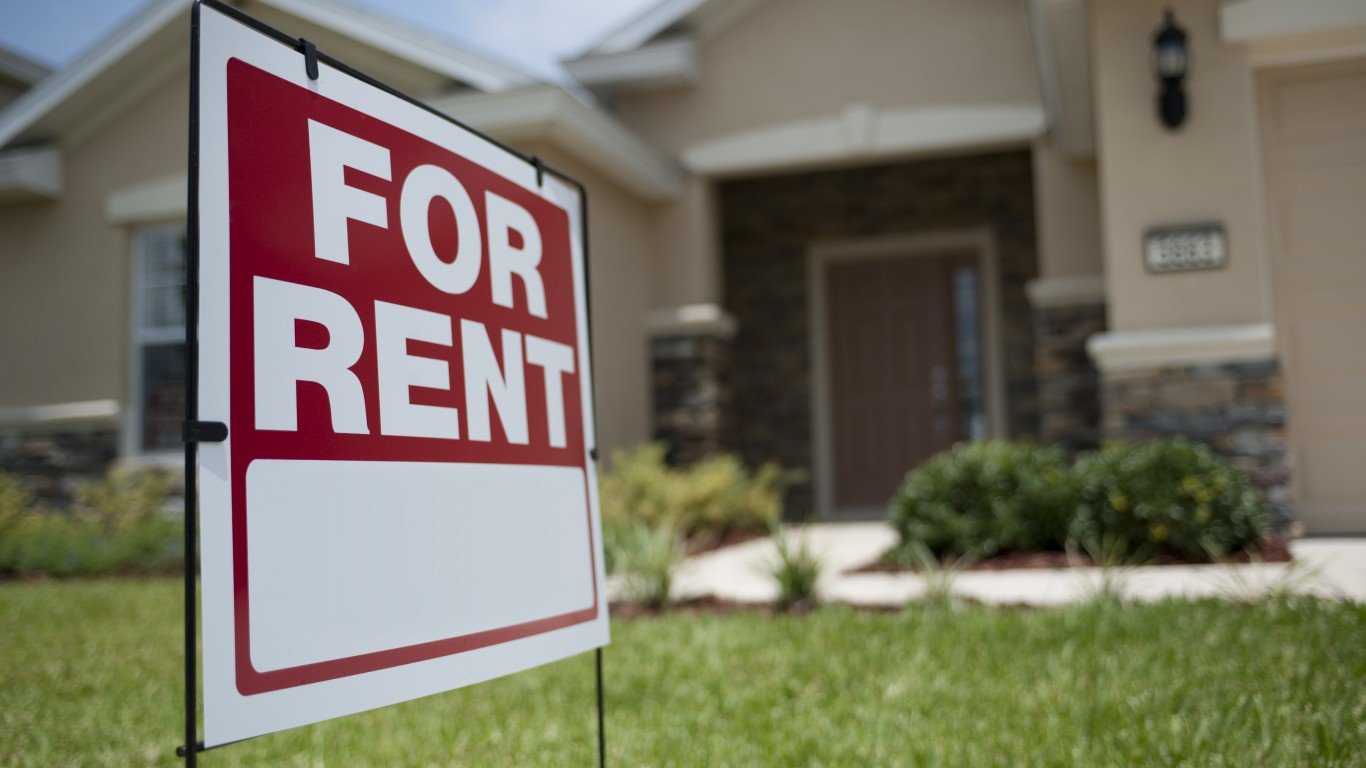 24/7 Wall St.
24/7 Wall St.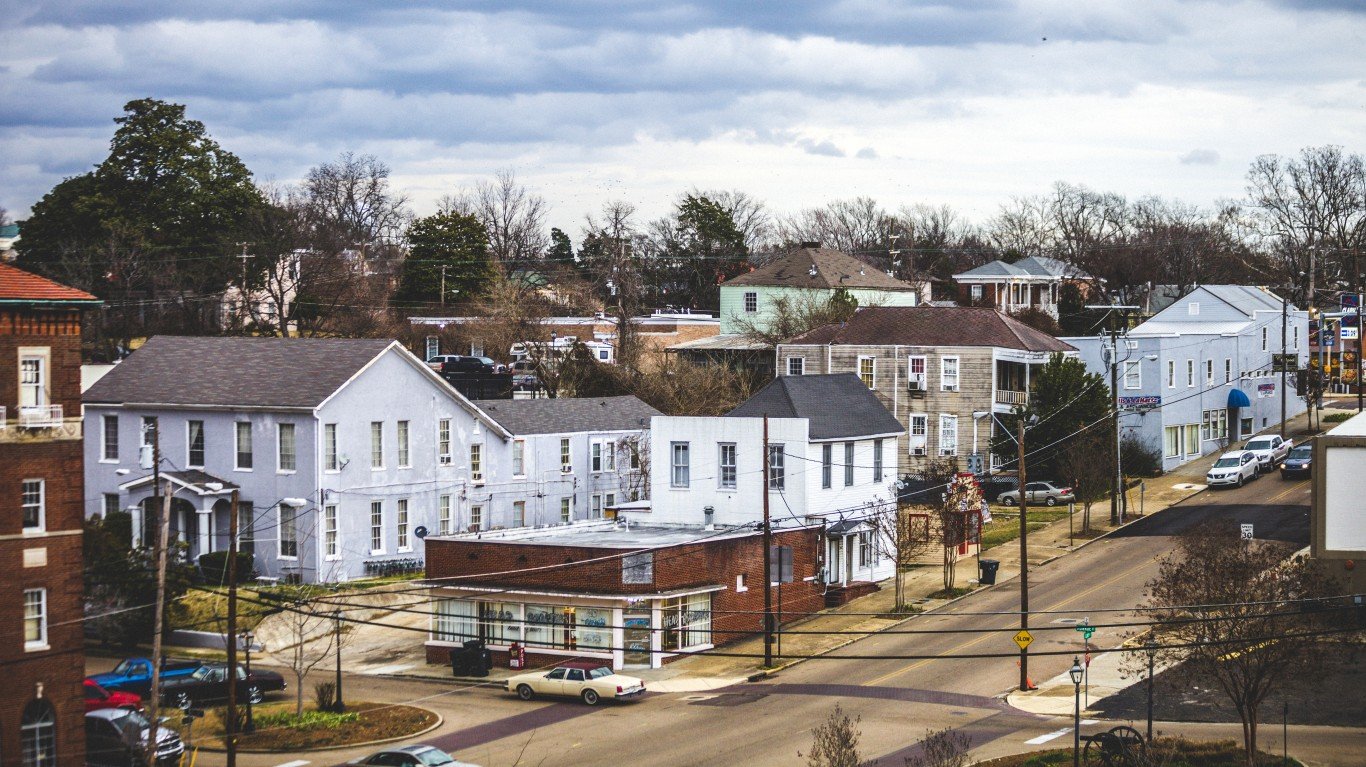 24/7 Wall St.
24/7 Wall St.